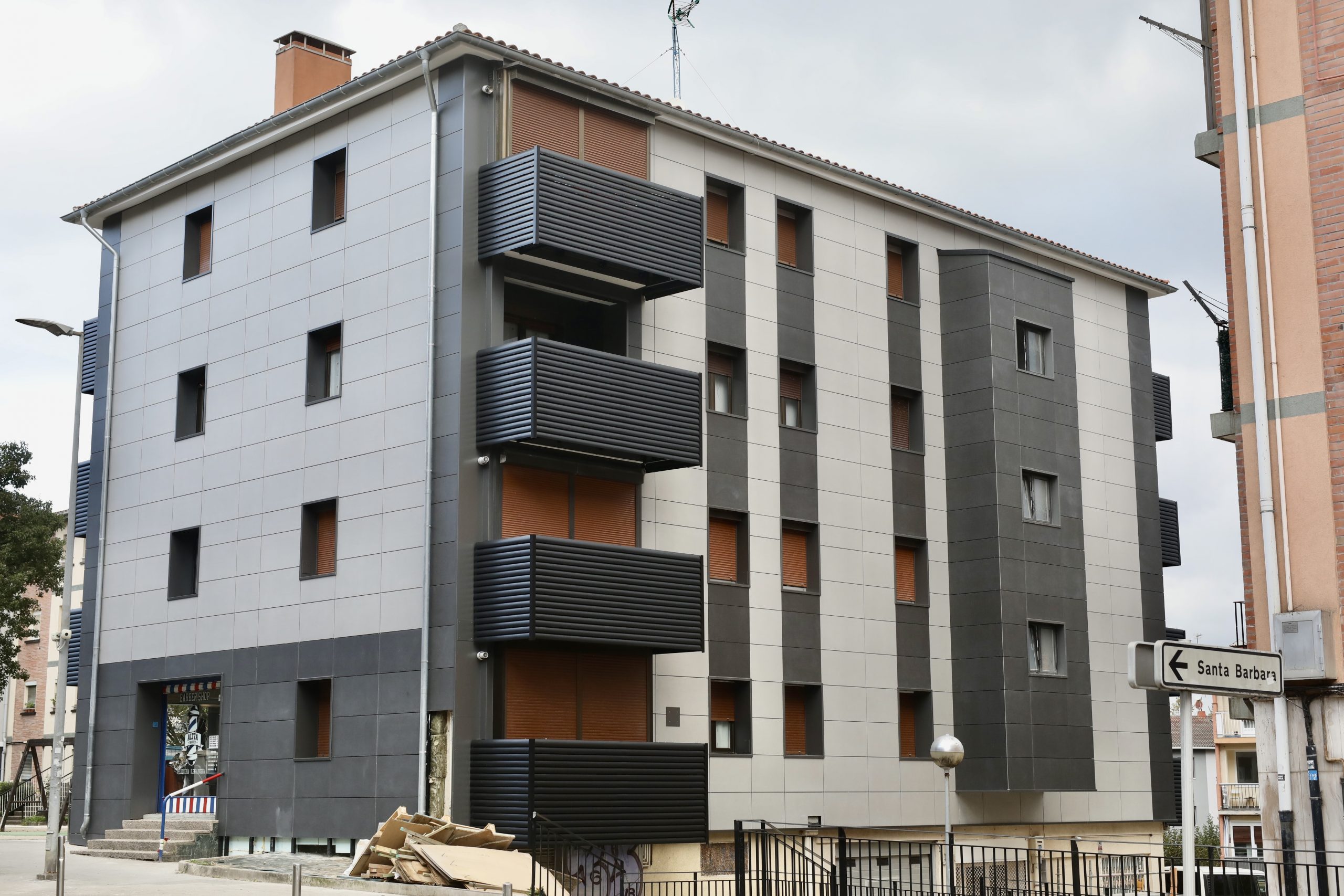
With around 20,000 inhabitants and more than 8,900 homes, Altza is one of the most densely populated neighbourhoods in San Sebastian. More than 85% of its residential stock was built before 1981, making comprehensive investment in refurbishment and modernisation essential. The works, which have been underway since the second quarter of 2024, are now entering their final phase, with all comprehensive refurbishment work expected to be completed by the end of the year. However, work on public spaces is expected to continue throughout 2026.
This is one of the largest operations promoted by the Department of Housing and Urban Agenda, with a total investment of €15.1 million: €9.2 million contributed by the Basque Government through PIIE funds; €3.2 million by Donostia City Council and €2.6 million from the neighbourhood.
The first line of action has focused on the extensive renovation of residential buildings, reaching a total of 202 homes distributed across eight homeowners’ associations and one semi-detached house, located in the most vulnerable areas of the neighbourhood. These actions improve accessibility, energy efficiency (with an approximate economic saving of 60%), habitability and fire protection, and reinforce structures and adapt buildings to current regulations. The ventilated façades incorporate a metal substructure, air chamber and thermal insulation, thus improving the interior temperature and humidity. In addition, several entrances have newly constructed external lifts.
At the same time, to support communities throughout the process, a neighbourhood office (Opengela) has been set up to offer local, professional advice on procedures, information and resolving queries, encouraging active community participation.
The project also includes the redevelopment and improvement of public spaces, with the renaturalisation of streams in Auditz Akular; the recovery of contaminated soil in the Larres Watercourse; and the creation of greener environments in Ederrena Square and the accesses to the Herrera pelota court. In addition, the routes to the Altza health centre and the Harri Berri ikastola (Basque-medium school) are being improved, with the aim of facilitating mobility for hundreds of families.
In terms of energy sustainability, local energy communities have been set up: a photovoltaic plant on the roof of the Altza public school supplies 13 buildings and public facilities with 98,075 kWh per year, and another plant in the sports centre will produce 377,505 kWh per year in a shared self-consumption scheme that will benefit municipal facilities.
The digitisation of homes allows real-time monitoring of parameters such as air quality, humidity, temperature, CO₂ levels and energy consumption, and provides families with tools to optimise energy use and improve their comfort and health.
The project also highlights the value of Lau Haizeta Park, renewing signage by designing environmental trails with QR codes. A study of visitor numbers has been carried out to guide future improvements, consolidating a natural space that is widely used by the community.
In this way, the comprehensive regeneration of Altza has established itself as a pioneering project in the Basque Country, both for its economic scope and its social impact. The combination of housing renovation, local services, clean energy, digitalisation and improvement of the urban landscape represents a model to be followed for future operations in other neighbourhoods of San Sebastian and the Basque Country as a whole.

